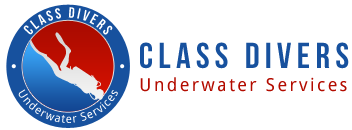
LNG – This time the port of Ningbo-Zhoushan, the port of Marseille Fos and the port of Vancouver, have joined the port of Singapore and seven other organizations to participate in an international group of LNG bunker concentration. The main objective of this group is to strengthen the network of LNG ports and reinforce the efforts for the use of LNG as marine fuel.
Liquefied Natural Gas (LNG) – meaning natural gas that has been processed to be transported in a liquid form. It is the best alternative to monetize remote and isolated reserves, where it is not cost effective to bring the gas to the market.
With the merging of new ports, a network of a total of eleven ports and maritime administrations is expanded in Asia, Europe and North America. This organization was formed for the first time in 2014 by the Singapore Maritime and Port Authority, the Port Authority of Antwerp, the Port of Rotterdam and the Port of Zeebrugge.
In 2016 the Asian representation of LNG was strengthened by the merge of the Ministry of Land, Infrastructure, Transportation and Tourism of Japan and the Port Authority of Ulsan of the Republic of Korea.
Also, other industries have also joined this initiative, Yokohama-Kawasaki International Port Corporation (YKIP), is now part of SEA / LNG, the industry’s multi-sector coalition with the goal of accelerating the widespread adoption of LNG as a marine fuel.
SEA / LNG and member organizations continue to support the need to collaborate, demonstrate, and communicate key factors such as security, regulation, and economy to provide the confidence and demand needed for an effective and efficient global value of marine LNG by 2020.
In this regard, TOTE Inc. President and Executive Vice President, Peter Keller, said: “Ports around the world are taking the LNG seriously and as customers begin to adopt LNG as a viable and scalable solution, then ports are recognizing that it is an essential part of a future supply of strong fuel”.
One of the strongest countries in the industry is Japan, which is the world’s largest importer of LNG, with 35 regasification terminals. In 2016 it had about 34 percent of world imports, meaning about 86 million tons of LNG.
On the other hand, the ports of Yokohama and Kawasaki are perfectly located geographically to serve on the Asian side of the Trans-Pacific route. YKIP is the second Japanese organization to join the SEA / LNG coalition in a matter of weeks after the newly announced incorporation of Marubeni Corporation. This adds up to 26 members and highlights the growing of the LNG industry as a cost-effective, secure and environmentally friendly long-term solution.
SEA / LNG, brings together key stakeholders from various sectors of the shipping industry, including the supply chain, shipping companies, rating societies, ports, major LNG suppliers, downstream companies, Infrastructure providers and OEMs to address trade barriers and transform the use of LNG as marine fuel.
